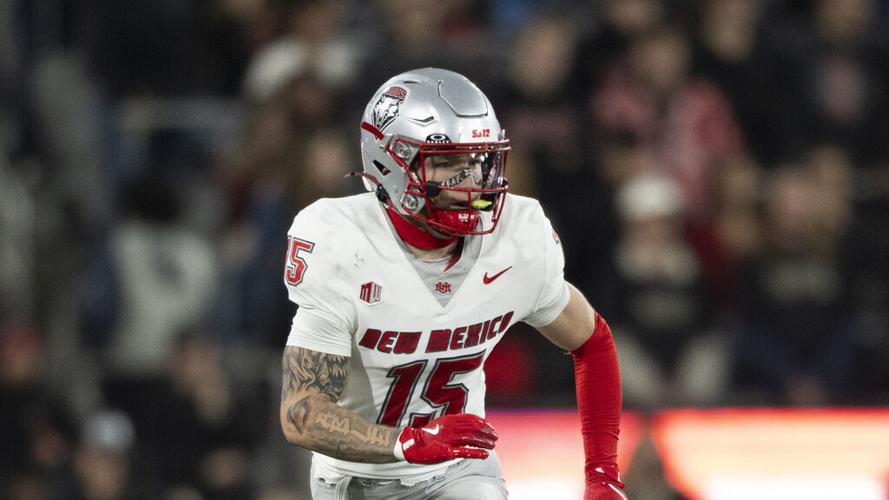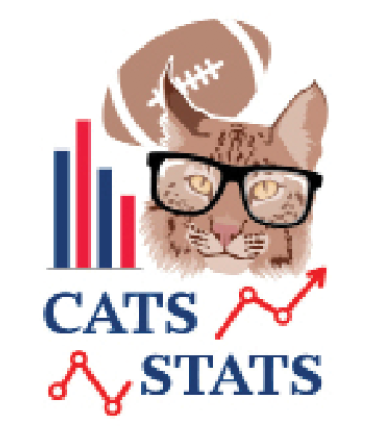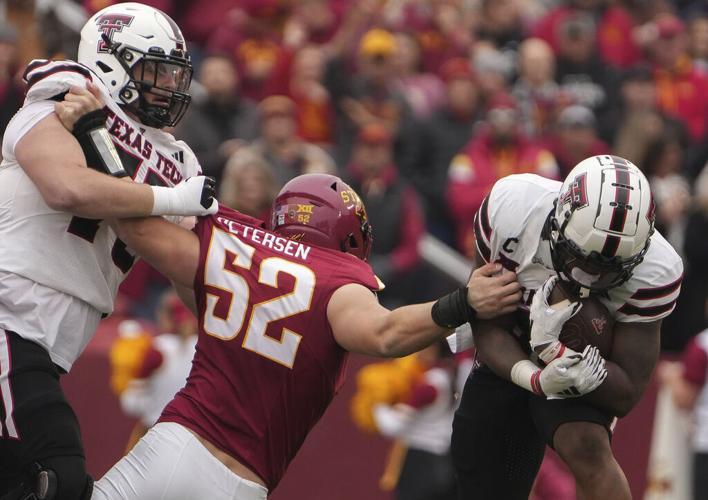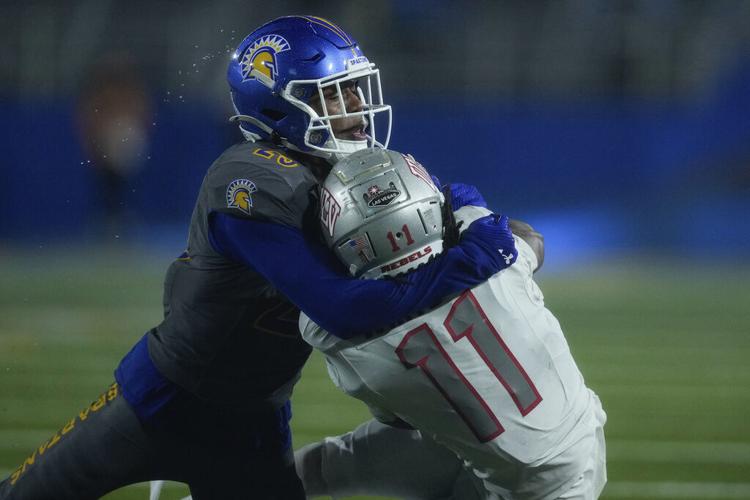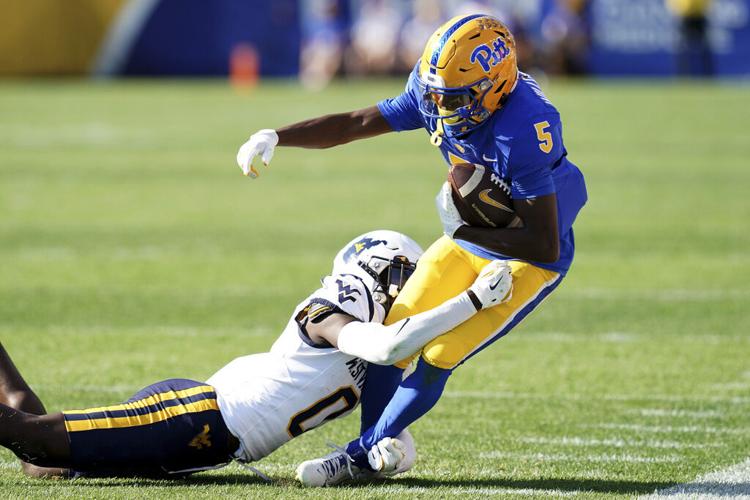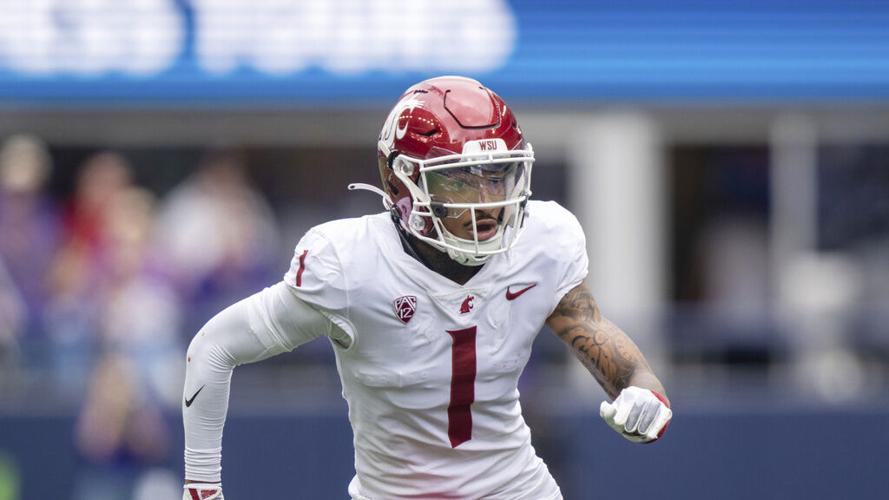The moves are coming fast and furious.
├█Ķųų▒▓ź has been adding transfers almost daily. The defensive coaching staff will have a new look. When spring football comes, the Wildcats wonŌĆÖt just feel like a new team ŌĆö theyŌĆÖll be a new team.
Will that team be an upgrade? Will a robust and well-regarded transfer class make an immediate and substantial impact?

You never know for sure how a roster will gel. But most portal pickups at least have taken snaps in college games. So roster architects have something to go on ŌĆö film to analyze and data to crunch.
In this special offseason edition of ŌĆ£Cats Stats,ŌĆØ weŌĆÖll take a stab at the latter via the vast database our colleagues at have amassed. What follows are need-to-know numerical nuggets on 22 of ├█Ķųų▒▓źŌĆÖs newcomers. Most highlight what they do well. Some will point out areas where they need to improve.
People are also reading…
(Note: Three players ŌĆö offensive lineman Tristan Bounds, tailback Mike Mitchell and receiver Tre Spivey ŌĆö have not played enough to accumulate an adequate sample size.)
DE Malachi Bailey
PFF credited Bailey with 52 quarterback pressures last season at FCS Alcorn State. The competition level isnŌĆÖt the same as FBS, but to put that figure in some perspective: BaileyŌĆÖs total would have tied for 15th among FBS edge defenders and would have ranked first in the Big 12, where ColoradoŌĆÖs BJ Green II led the league with 43 pressures.
TE Cameron Barmore
Barmore ŌĆö listed at 6-6, 230 ŌĆö played wide receiver at Mercyhurst, an FCS program in Erie, Pennsylvania. He projects as a tight end at ├█Ķųų▒▓ź. Can he block? Per PFF, Barmore served as a run blocker on 247 of 663 offensive snaps last season. The site gave him a grade of 74.5 ŌĆö on par with departed tight end Keyan Burnett, whose run-blocking grade of 74.3 was second best among all UA players in 2024.
OL Jordan Brown

Iowa State defensive end Joey Petersen (52) grabs the jersey of Texas Tech running back Tahj Brooks, right, while fighting off offensive lineman Ty Buchanan, left, during the first half, Nov. 2, 2024, in Ames, Iowa. Buchanan will play for ├█Ķųų▒▓ź in 2025.
Brown started at left tackle in Georgia TechŌĆÖs first five games last season and his blocking grades were not very good ŌĆö especially his 30.1 mark for pass blocking. But almost all of his issues happened in his final start vs. Louisville. PFF charged him with five pressures allowed in that game ŌĆö the only pressures he surrendered in 92 pass-blocking snaps. His pass-blocking grades ranged from 60.9 to 82.9 in his other four appearances.
OL Ty Buchanan
Buchanan played three seasons at Texas Tech. He played almost the same number of snaps at left tackle (408) as he did right tackle (385). That kind of versatility is always valued. Buchanan will give ├█Ķųų▒▓ź options as the coaching staff sorts out an offensive line that will have many new faces and will be learning a new scheme under first-year coordinator Seth Doege.
CB JayŌĆÖVion Cole
Cole barely played for Texas this past season. He excelled under BrennanŌĆÖs staff at San Jose State in 2023, allowing only 26 catches on 53 targets for a 49.1% reception percentage against. Cole also surrendered only one touchdown in his coverage area that season with an average per catch allowed of 11.4 yards. Each of ├█Ķųų▒▓źŌĆÖs top three cornerbacks yielded an average per catch of at least 13.1 yards in 2024.

San Jose State defensive back Michael Dansby, left, tackles UNLV wide receiver Ricky White III during the second half of their game Nov. 22, 2024, in San Jose, Calif. Dansby since has transferred to ├█Ķųų▒▓ź.
RB Quincy Craig
Craig played the past three seasons at FCS Portland State, where he averaged 3.66 yards after contact per rushing attempt ŌĆö slightly above leading returning rusher Kedrick ReescanoŌĆÖs mark of 3.55 (albeit against a different level of competition). Craig lined up in the slot 98 times last season and had an average depth of target (ADOT) of 5.7 yards. ├█Ķųų▒▓źŌĆÖs top pass-catching back in 2024, Quali Conley, had an ADOT of minus-1.9 yards.
CB Michael Dansby
Dansby played the past three seasons at San Jose State and did some of his best work under current UA cornerbacks coach Chip Viney. Dansby had a reception percentage against of 50.8% across the 2022 and ŌĆÖ23 seasons. Last year that number jumped to 63.5%. Dansby did a better job of keeping receivers out of the end zone, allowing only two touchdowns in 63 targets compared to five in 59 the previous two years.
OL KaŌĆÖena Decambra
Decambra played the past three seasons at Hawaii. He played almost exclusively at left tackle last year (817 of 820 snaps). However, at 6-3, 300 pounds, Decambra is likely to move inside at ├█Ķųų▒▓ź. He primarily played right guard the previous season (553 snaps) while also spending time at right tackle (190). Not that Decambra is on the same level, but fellow Hawaiian Jonah Savaiinaea provided similar versatility during his time in ├█Ķųų▒▓ź.

Pittsburgh wide receiver Raphael Williams Jr., right, is tackled by West Virginia's Ayden Garnes during the first half of their game Sept. 14, 2024, in Pittsburgh. Garnes will play for ├█Ķųų▒▓ź in 2025.
S Jshawn Frausto-Ramos
Frausto-Ramos played 422 defensive snaps in two seasons at Stanford, with the majority of those coming in the slot (254). That could make him a candidate to play the nickel position in new defensive coordinator Danny GonzalesŌĆÖ scheme. Frausto-Ramos needs to improve in coverage (65.9% career reception percentage against). He has improved as a tackler, lowering his missed-tackle rate from 16% in 2023 to 5.9% in ŌĆÖ24.
CB Ayden Garnes
Garnes struggled at times after making the jump from Duquesne to West Virginia last season. His PFF coverage grade dropped from 90.1 to 49.5 and his yards allowed per reception jumped from 8.4 to 16.2. Garnes still had a respectable reception percentage against of 53.6% and was not charged with a touchdown allowed in 28 targets. Garnes played more in the slot at Duquesne.
OL Flavio Gonzalez
The Pueblo High School product is a pure guard, playing 790 of 794 snaps at either right or left guard over three seasons at Oregon State. Gonzalez started for most of the 2024 season, playing almost exclusively on the right side (713 of 723 snaps). He earned a middling pass-block grade of 52.5 from PFF despite allowing only one sack in 388 pass-protection snaps.

Receiver Kris Hutson, shown with Washington State on Sept. 14, 2024, is among the players joining ├█Ķųų▒▓ź via the transfer portal.
LB Blake Gotcher
Gotcher was a tackling machine at FCS Northwestern State last season. He didnŌĆÖt miss many, registering a career-best 10.3% missed-tackle rate. ├█Ķųų▒▓źŌĆÖs top two linebackers last year, Jacob Manu and Taye Brown, had missed-tackle rates of 14% and 11.3%, respectively. PFF also credited Gotcher with 61 defensive stops (tackles that constitute a failure for the offense).
LB Max Harris
Harris is a true space player, playing off the line 75.1% of the time over his first three college seasons. But his playing time wasnŌĆÖt limited to linebacker. Harris played 196 snaps at free safety and 45 as a slot defender at Louisiana Monroe in 2023. He improved as a tackler last year at Texas State, recording a career-best 7% missed-tackle rate.
WR Kris Hutson
Hutson spent last season at Washington State after starting his college career at Oregon. At both stops, he split reps almost equally between outside receiver and the slot. Hutson had a 51.6% slot rate with WSU; he was at 46.5% at Oregon. As with offensive linemen, versatility is valued at receiver. HutsonŌĆÖs experience and ability to play multiple spots will be assets for ├█Ķųų▒▓ź.

Wisconsin quarterback Braedyn Locke (18) passes the ball against Nebraska during the second half, Nov. 23, 2024, in Lincoln, Neb. Locke is among 25 transfers (so far) in ├█Ķųų▒▓ź's 2025 portal class.
QB Braedyn Locke
Locke completed just 53.4% of his passes over two seasons at Wisconsin. He needs to improve on the ŌĆ£gimmeŌĆØ throws. Locke had a 62.2% completion rate with a 5-6 touchdown-to-interception ratio on throws of 0-9 yards, per PFFŌĆÖs charting. UA starter Noah Fifita had an 80.7% completion rate with a 5-1 TD-INT ratio on such throws last season. Doege will want his quarterbacks to get the ball out quickly and Locke has shown he can do that; his average time to throw last year was 2.55 seconds, well below FifitaŌĆÖs mark of 3.14.
RB Ismail Mahdi
MahdiŌĆÖs profile suggests heŌĆÖll bring at least two elements to ├█Ķųų▒▓ź: breakaway potential and pass-catching skill. Mahdi had 20 breakaway runs (designed runs of 15-plus yards) at Texas State in 2023 and 13 a year ago. His career breakaway rate of 37.3% is in line with ReescanoŌĆÖs last year (37.6%). Meanwhile, Mahdi had 25 passes thrown his way in 2024 ŌĆö and caught 24 of them.
DL Deshawn McKnight
McKnight had by far his most productive season in college last year, registering 22 QB pressures in 263 pass-rush snaps at UT Martin. That figure would have ranked third on ├█Ķųų▒▓ź in 2024. ItŌĆÖll be interesting to see how the Wildcats utilize McKnight, whom UTM listed at 6-3, 285. He lined up over an offensive tackle 72.6% of the time at his previous stops.
DE Chancellor Owens
Owens also cranked up the pressure last year, registering a career-best 26 QB pressures at Northwestern State. His usage was that of a pure edge player. Owens lined up either over or outside an offensive tackle on 89.2% of his 762 defensive snaps in two seasons with the Demons.
OL Isaac Perez
Expect one of the latest additions to the roster to get a long look at center, a position ├█Ķųų▒▓ź hadnŌĆÖt been able to address previously. Perez started the first two games last season at left guard for Portland State before switching to center, where he ended up playing 580 of 671 snaps. His average PFF grade last year was more than 10 points higher at center (65.0) than guard (53.6). He was charged with only one sack allowed in two seasons.
WR Javin Whatley
ItŌĆÖs pretty clear from WhatleyŌĆÖs usage rates what ├█Ķųų▒▓ź has in mind for the former UT Chattanooga standout. The 5-10, 167-pound Whatley lined up in the slot 88.8% of the time over three seasons with the Mocs. Whatley will need to work on his hands; he notched career worsts in drop rate (9.8%) and contested-catch rate (12.5%) last season.

New Mexico wide receiver Luke Wysong runs during a game against San Diego State on Nov 8, 2024, in San Diego. Wysong is set to play his final college season at ├█Ķųų▒▓ź.
LB Riley Wilson
Edge player? Off-ball linebacker? Both? Wilson played on the edge more often than not at Montana, lining up outside the tackle on 59.7% of his defensive snaps over two seasons. But he also played off the line 38.6% of the time with an elite 7.1% missed-tackle rate. Wilson should be a fun chess piece for Gonzales.
WR Luke Wysong
Wysong played outside a career-high 34.2% of the time last year at New Mexico but did most of his work for the Lobos out of the slot (76% career usage). Wysong was involved in a career-high 29 contested-catch scenarios last year and won more than he lost. His 51.3% success rate would have ranked second among UA wideouts last season behind only Tetairoa McMillan (61.3%).
Contact sports reporter/columnist Michael Lev at mlev@tucson.com. On X (Twitter): @michaeljlev. On Bluesky: @michaeljlev.bsky.social













